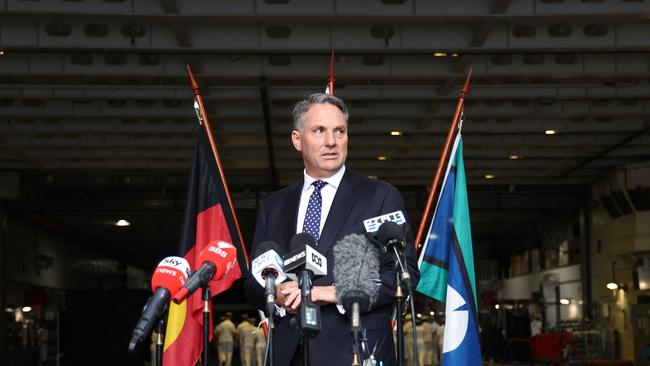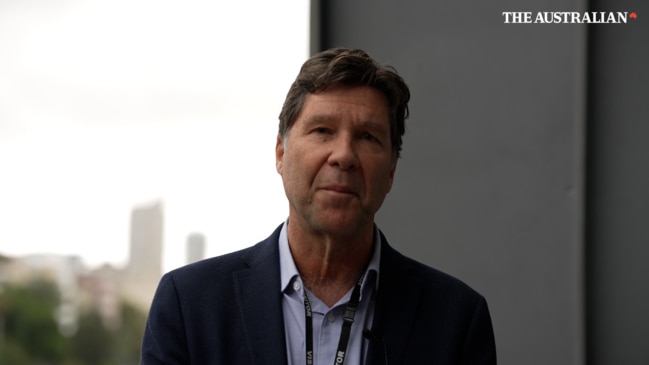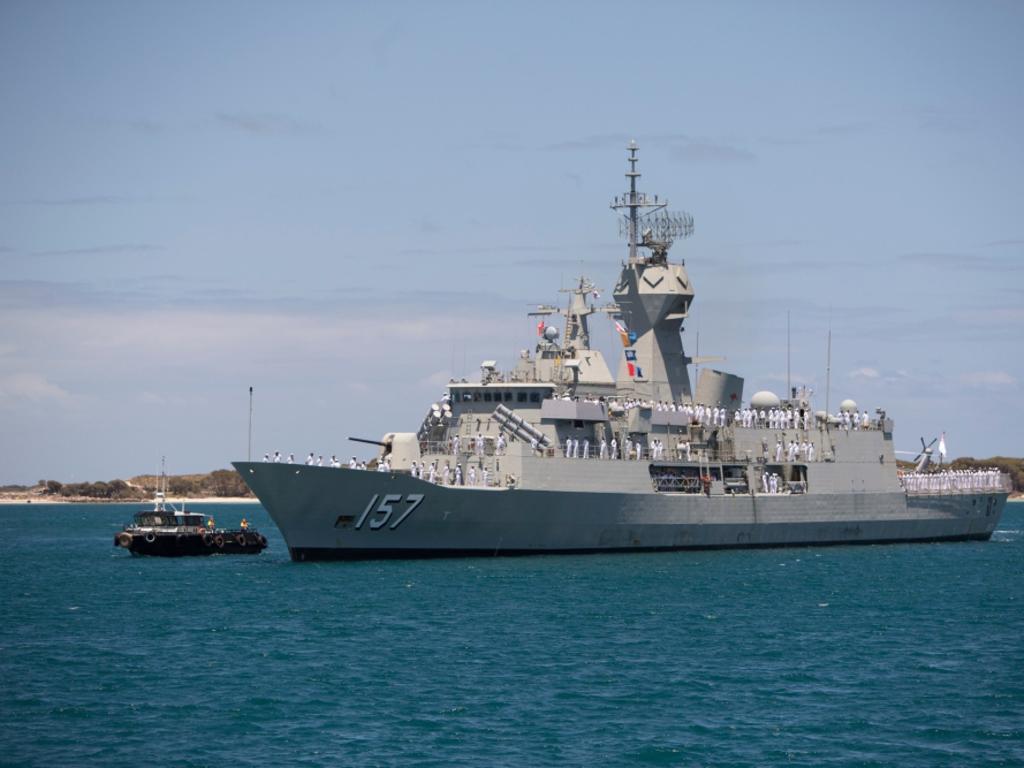‘Missed opportunity’ on un-crewed ships for new naval fleet
Labor has included six ‘optionally crewed’ drone ships that don’t yet exist in their count of their enlarged 26-warship fleet.

The procurement of six “optionally crewed” drone ships announced as part of a sweeping restructure of the navy’s surface fleet is a “missed opportunity” to rethink and future-proof the restructured combatant fleet, defence experts have warned.
The Albanese government has included the so-called large optionally crewed surface vessels in its count of the enlarged 26-warship fleet but the ships don’t yet exist in the desired form and their date of operation could be anywhere from the mid-2030s to the mid-2040s.
The independent analysis of the navy’s surface combatant fleet states its new convoy of semi-autonomous LOSVs with 32 missile cells each would increase the “fleet lethality with a lower cost and crewing impact”.
But Defence Minister Richard Marles was insistent the optionally crewed vessels would be crewed anyway. “It is true that these are being developed in a manner which is un-crewed but it is our intention to crew them,” he said.
“They will work in combination with, and have to work, as they’re designed, in combination with the Hunter-class frigates or the existing air warfare destroyers.”
While the vessels would carry many missiles, they can’t operate independently and require a buddy ship.

“But what they do achieve and why we’re pursuing them is a significant lift in our vertical launch capability,” Mr Marles said.
“It dramatically increases that,” he said.
“So we will be working with the United States in relation to this … we are very confident about being able to put these in our navy in the time frame we’ve described.”
The LOSVs are being developed by the US Navy and the government has already been in discussions with Washington as a “fast follower” of the program. But the US doesn’t yet have optionally crewed vessels that can carry 32 long-range missiles.
The Defence Minister said the six LOSVs would be built at the Henderson shipyard in Western Australia.
“This provides a multi-decade pipeline of work in Perth for the Henderson naval precinct,” Mr Marles said.
Documents released on Tuesday as part of the government’s restructure state the LOSVs could also be built overseas.
Strategic Analysis Australia head of research Marcus Hellyer said it was a “missed opportunity” to integrate the autonomous systems that already exist.
“The new fleet looks a lot like the current fleet, just hopefully faster and bigger. It’s not a different way of thinking about doing things,” Dr Hellyer said.
“What was announced with these LOSVs is … is a very conservative, unimaginative approach to truly elevating the potential of autonomous systems,” he said.
“The Defence Strategic Review did come out and say uncrewed systems are very important and a high priority, including in the underwater space,” Dr Hellyer said.
“This is a document that, in some ways, is about putting the broader recommendations of the Defence Strategic Review into practice, but its silent on those issues and in a sense they’ve disappeared. It’s quite disappointing.”
Dr Hellyer said manning these semi-autonomous vessels “completely undermines the whole point”. “Instead of spending the money, time and risk on bigger warships, we build simple vessels that carry many missiles. Which is fine, but we’re going to crew them. That kind of defeats the purpose of designing autonomous vessels.
“The way the military is comfortable thinking about (autonomous vessels) is the concept of … traditional crewed ships or planes working in teams with uncrewed systems … it’s a relic of the military’s comfort zone they don’t want to take humans out of the equation. But we can move a lot faster if we skip the middle step.”







To join the conversation, please log in. Don't have an account? Register
Join the conversation, you are commenting as Logout